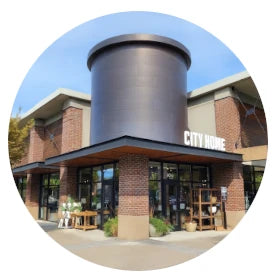A Guide to Sustainable Maximalist Décor
Move over minimalism, there is a new trend in town, maximalist décor! No longer do we need to meticulously curate our spaces to only include the bare essentials, the items that “spark joy,” or pare our lifestyles back to the absolute basics. Maximalist décor is a more-is-more approach, an approach where we embrace every item, every trinket, and every soft furnishing. But just because we are embracing a home filled with more doesn’t mean that we can’t still be sustainable. Here is our guide to a sustainable maximalist décor.
A Maximalist Design Style Explained
The term maximalism is relatively new in the design world and, as such, can be misinterpreted. While it might conjure up mental images of filling your house with old antiques, curiosities, and nick-knacks, it actually means a carefully curated design scheme that blends a wide variety of elements to create a unique and harmonious space.
The art of a maximalist design style is to work two or more items from wildly different schemes (say, a piece of pop art and an 18th-century antique bureau) to compliment one another in a wider design. The more items and pieces you can use in a space to compliment one another, the more of a maximalist design style you will achieve.

What Is Maximalist Furniture
A maximalist design scheme works best when every item or piece of furniture can hold its own, from antiques to brand new pieces of furniture, the brighter, the bolder, the braver, the better. Most maximalist furniture tends to favor bright and bold colors (such as hot pink, rich reds, or deep greens) and bold patterns.
These colors and patterns can be the focal point of a room by clashing with the rest of the scheme, or they can delicately tie the whole design together (for example a bottle green velvet sofa could tie in with the plants on the antique bookcase, the colored vases on the coffee table and the mid-century landscape paintings). Maximalist furniture can be new or antique, but more often than not will have an element that will make it stand out from “the norm,” such as unusual handles or an upcycled facelift.
How Does Sustainable Maximalism Work?
With all this talk of adding more and more elements into your design scheme, you might be wondering how you can be sustainable in the process? Thankfully maximalism lends itself nicely to quirky, antique, second hand and upcycled. Reusing and repurposing furniture for your design scheme can save furniture from landfill and give it a new life, too (not to mention the uniqueness of a piece that has been given a new look to suit your maximalist style).

As well as acquiring second-hand and antique pieces, there are also several companies that specialize in sustainable homewares and furniture with a maximalist twist. The beauty of a maximalist décor is that you can combine different styles and elements in one scheme, so blending new maximalist furniture with reclaimed accessories can work really well.
Your Maximalist Décor Questions Answered
Creating a sustainable maximalist décor can be a minefield when you are starting from scratch, so here are some answers to the most common questions we hear asked about maximalist design.
What is the meaning of maximalism?
Maximalism can be summed up by saying, “more is more.” While it is the opposite of minimalism, it is still a design aesthetic which needs care and attention when pulling the whole scheme together.
Where minimalism will add two or four carefully coordinating cushions onto a sofa, maximalism will add sixteen varying shades and patterns of bold and bright contrasting colors. The care and attention to this contrast/clash balance is still very present, just as with any design scheme. Combining old and new, with bold and muted tones, clashing prints and playing with tones, there are lots of opportunities to express yourselves creatively.
What is a maximalist decor?
The maximalist décor can be anything from antique trinkets to a huge collection of houseplants. The idea is that regardless of what it is filling the space, the items and accessories must take up as much of the room as possible. This doesn’t necessarily mean that you need to stuff every shelf with ornaments.
A single bold print can take up a lot of emotional space in a design scheme, just as an intricate design on a soft furnishing can take up a lot of visual space. It’s about playing with both the physical and the emotional space in a maximalist scheme.

Can maximalism be sustainable?
You could argue that maximalism is the ultimate sustainable design scheme! Lending itself nicely to second-hand, antique, and upcycled items, you could be saving a lot of items from otherwise being discarded and also save a lot of new items being produced. Searching through high-end auction houses as well as more budget-friendly thrift stores will help you to create a sustainable blend of items that will accentuate your design scheme without impacting our planet.
What is ethical maximalism?
Similar to sustainable maximalism, ethical maximalism is an approach whereby you focus not only on the sustainability credentials of an item but also the story and ethics behind it. This can open up a wider option of furniture and furnishing choices and can also help small independent businesses and those who treat their workers fairly as well as treating the planet fairly. Seek out independent furniture makers, ethical fabric companies, and always check companies mission statements for clues on how much they value their staff and suppliers.
When done correctly, maximalism is a wonderful expression of creativity and a journey of discovery as you continue to bring the maximalist décor together. By creating a space filled with bold prints, bright colors, and every item telling its own story, your home will be a maximalist haven of joy!
Are you looking to adopt the maximalist aesthetic in your space? Check out City Home furniture, decor, and design services.







